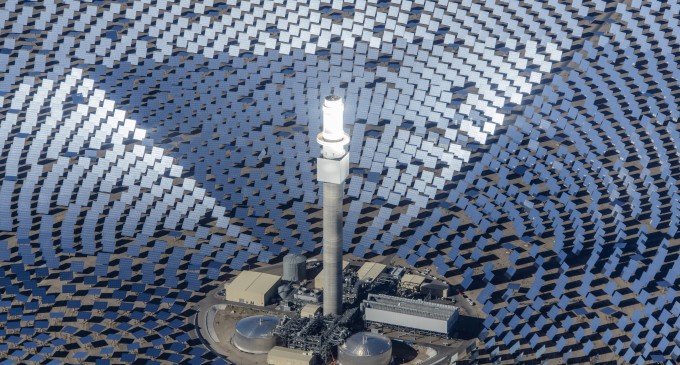Jose Antonio Lobo, Director of Development at SolarReserve, sees the current environment of lower commodity pricing and low spot prices as an opportunity for renewables to help mines hedge their exposure to volatile fuel pricing in the future. In this Industry Q&A, Lobo provides an update on SolarReserve’s Chilean project and his outlook on future mine-renewables partnerships in the region.
Q: Can you give us your perspective on the environment for mining-solar partnerships in Chile currently? For example, what has been the impact of lower commodity prices for the resource sector and lower spot market prices in Chile?
Recently mining companies have struggled with low commodity pricing, which affects their investment decisions in new mining projects, but also creates an opportunity for renewable energy developers to help mining companies hedge their exposure to volatile fuel pricing in the future. While spot electricity prices are currently low, mines recognize the need to base their development plans on long-term pricing. And mines need 24/7 power, delivered through a stable transmission infrastructure.
SolarReserve’s unique solar thermal technology with energy storage offers a non-intermittent, reliable and low cost supply of electricity critical to 24/7 mining operations. These baseload solar power solutions will also fully utilize transmission infrastructure, and help stabilize the transmission grid as more intermittent renewable technologies reach higher penetrations. Chile’s excellent solar resource allows for a renewable energy solution that delivers significant savings and predictable energy costs to mining operations throughout the region.
Q: Can you give us an update on your Copiapó project in Chile?
The Copiapó project utilizes SolarReserve’s industry leading concentrating solar power (CSP) tower technology with molten salt thermal energy storage. The facility will deliver over 1,800 gigawatt hours (GWh) annually, while providing a highly competitive price of power. It will produce up to 260 MW’s of firm baseload power; operating at a capacity factor and availability percentage equal to that of a coal fired power plant.
SolarReserve has secured the land, completed environmental studies, and has received environmental approval to move forward with the project. The company’s engineering team has also completed extensive analyses and design to optimize project configuration from both a technology and cost perspective, including enhancements to the molten salt receiver technology geared specifically to support 24/7 baseload power delivery.
SolarReserve has not yet finalized an agreement with a Chilean Mine, but is in active negotiations with several mining companies for the sale of baseload solar power, both for supply of existing facilities and for future supply of expansions and new projects.
Q: Do you see more opportunities for utility-scale CSP projects with mine off-takers in Chile?
A: SolarReserve’s integrated storage technology is a viable, renewable energy generation option capable of delivering power during peak periods or 24/7 baseload demand, to inject the energy into the interconnected system (SIC or SING) predictably and without intermittency. SolarReserve is actively developing/permitting over 1200 MW of CSP projects in Chile – including the Copiapó Solar Project.
The national mining industry benefits from the introduction of this technology, as it can provide predictable and stable energy costs to mining operations that are competitive with conventional energy sources – eliminating fuel risk and reducing operating costs. In addition, it will provide clean renewable energy with no emissions, which is a value to an industry that is looking to enhance its sustainability efforts while minimizing environmental impacts.
The Chilean Government has set aggressive targets for renewables, which will benefit consumers and mines alike, transforming the energy mix of the country. SolarReserve intends to also participate in the upcoming Distribution Companies tender in July 2016.
Q: Can you tell us what the current barriers are for partnering with mines in this market as well as which other countries in South America hold potential for mine-solar partnerships?
A: Technology risk as well as length of power contract term have been the challenges for mines to move forward with SolarReserve’s baseload solar power offering. However, SolarReserve’s flagship project in the US, the Crescent Dunes Solar Energy Plant, is now in commercial operations, delivering 110 megawatts of electricity plus 1,100 megawatt hours of energy storage.
The project, utilizing SolarReserve’s proprietary molten salt solar thermal technology, is the first utility scale solar power plant ever built with fully integrated energy storage, enabling day and night operation. With Crescent Dunes to serve as an example of our technology’s capabilities, the risk associated with the technology will abate. Mining companies will recognize the value of solar with storage as a viable energy solution.
We see a potential to provide energy through solar power plants in Argentina, and Perú as they have similarly high solar resource in addition to large mining projects that will require baseload energy supply.
Q: Chile has a tremendous solar resource and is one the world’s largest copper producers. What does the renewables sector need to better understand about mining’s energy challenges here to unlock the potential for further collaboration?
A: A mining customer is very different than a typical electric utility customer. Whereas an electric utility develops a long range resource plan to serve its customers and is willing to contract for 20 or more years, a mining customer typically has far more business variables to consider and is reluctant to enter into long-term power contracts.
This, in turn, makes it difficult for a developer to secure non-recourse project financing for his project since the revenue stream is contracted over a shorter term and often is not sufficient to service debt. In addition, a mining customer’s investment decision is based on commodity price market forces that continually change thereby further adding uncertainty to a mine’s ability to contract power under traditional long term power purchase agreements. In order to be successful, a developer should consider innovative financial structures including power hedges, contract for difference structures, and equity partnership with the mining customer.

